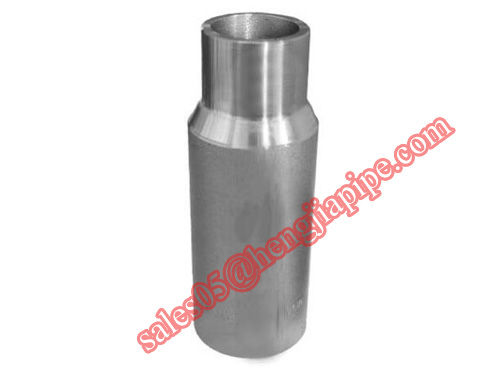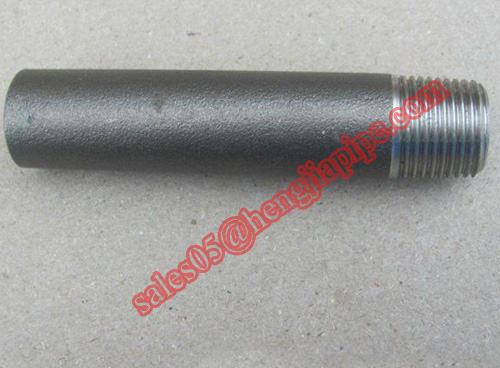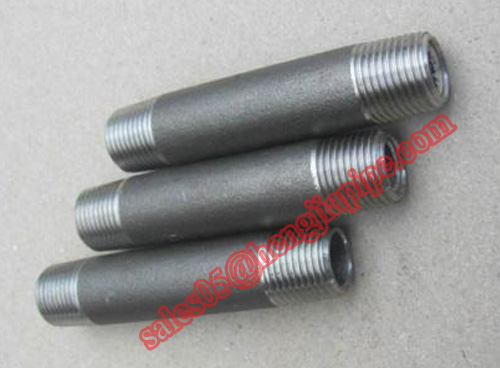Potassium salts are a general term for potassium-containing minerals. It can be divided according to their soluble potassium aluminosilicate minerals soluble and insoluble minerals of potassium. The former is a mineral resource that can be utilized by the accumulation of soluble potassium-containing salt minerals in nature. Aluminosilicate rocks are insoluble potassium or rock- rich rocks. At present, the main target for development and utilization worldwide is soluble potassium salt resources.
Potassium salts are mainly used to make potash. The main products are potassium chloride and potassium sulfate, which are among the three major fertilizers indispensable for agriculture. China is a country with extremely scarce potassium resources. As a large agricultural country, potassium resources are strategic resources that play an important role in China's economic development. However, due to the lack of potassium resources in China, industrial development is lagging behind, and potassium supply has long relied on imports. At present, Chinese companies have some potash projects in Laos, Congo, Canada, Thailand and other places, but only a few potash mines in Laos have actually entered production.
1The main problem of underground mining of solid potassium mine
Ore Type magnesium potassium carnallite main light and two kinds of sylvite, these two types of natural division standard is: sylvite ore MgCl2≤2.50%, KCl≥5.00%; carnallite ore: MgCl2> 2.50%, KCl ≥ 5.00%. Carnallite high magnesium containing ore, a great impact on the recovery rates; Ore the sylvite process is relatively simple, little risk to the environment.
The Wanxiang area in the northern part of the potash mine in Laos is dominated by carnallite-type ore. A small amount of potash salt is mined in the southern Ganmen area, and both are secondary potassium salt. The later mining is mainly carnallite type ore. At present, the underground exploitation of potash in Laos is mainly faced with two problems. First, the surface fresh water floods into the well through various channels, causing the deposit to dissolve, causing the risk of flooding and closing the pit; the second is the treatment of potash tailings and old brine. The tail salt is mainly solid waste salt containing NaCl, and the old brine is mainly brine containing MgCl2. Simple storage requires a large amount of land and is highly liable to cause environmental accidents.
Since the potash mine is very soluble in water, before the potash layer is excavated, there is a water-bearing rock layer in the upper part of the ore layer to isolate the ore layer from the upper freshwater layer. Based on the experience of the production of a potassium mine in Laos, the main factors affecting the water inflow from the potassium mine in Laos are analyzed.
(1) Formation. A potash mine in Laos is a marine-type continental sedimentary deposit. The strata in the potash deposit are mainly formed by three sedimentary cycles, which are divided into six sections. The main strata are located in the upper part of the a section, with an average depth of about 200 m. The speciality of salt deposits is that the solubility is large, and it is easy to dissolve in fresh water. Therefore, the upper part of the main ore layer has a thick water-repellent layer. The specific stratigraphic distribution is shown in Table 1. The roof of the ore layer is mainly mudstone and gypsum rock, and the mudstone and gypsum layer are micro-aquifer. After the mudstone layer is exposed in the Laos potassium mine, there is a small amount of fissure, which is a local weak aquifer; the upper Quaternary is the main inflow layer.

(2) Drilling. Geological exploration requires construction drilling, and the quality of drilling and sealing is not high, which will form a water guiding channel for the access to the mineral layer, which brings serious hidden dangers to the water in the well.
(3) Well and lane engineering. Seam deep underground, open up the main wellbore project must pass through to reach the top layer of slate ledge, directly connected to the surface and is about to seam. Due to the consideration of cost, the quality of the wellbore construction cannot completely eliminate the water from the wall of the wellbore. Generally, water interception measures are taken to intercept the water in the middle water outlet. For the reason of cost, no strict water shutoff measures are taken, resulting in the water inflow from the wellbore. A large part of the total water volume of the pit. At this stage, the main development transportation roadway is partially arranged in the vein. Due to the change of the ore body, some of the roadway roof penetrates the ore layer, and the roof is located in the mudstone layer. The mudstone is exposed to the wet air in the well for a long time, and the top has fine cracks. There is a small amount of water in communication with the upper part, and there is no effective support, which causes the roof mudstone to fall off. After a long time, the water output becomes larger.
(4) Geological structure. The major influences on gushing water in geological structures are faults, fissures, dissolved pores, and caves. This requires taking the necessary measures during the geological exploration phase to ascertain as much as possible, and to minimize or isolate these structural development sections, and take adequate precautions when constructing or producing close to these structural sections.
2 main preventive measures
The mine prevention and control water is based on the principle of “safety first, prevention first, comprehensive managementâ€, and adopts the principle of “predictive forecasting, suspected exploration, first exploration and subsequent exploration and prior treatmentâ€, mainly adopting “anti-blocking and sparsenessâ€. Five measures to strengthen the "predictive forecasting, scientific and technological research and rectification and reform". For the Laos potash mine, due to insufficient attention in the early stage of hydrogeological work, it is recommended to take measures in the following aspects to reduce the amount of water in the well and reduce the possibility of water inrush.
(1) Firstly, the hydrogeological conditions of the mine should be ascertained, a certain number of wells and hydrological observation holes should be established, and the hydrogeological conditions of the mining face should be focused on the mining production activities. Geological radar can be used to detect hydrogeological anomalies in front of the face, and to detect the internal structure of the working face. For geophysical results, a comprehensive analysis is carried out with drilling tools for further verification. A security pillar can be left in the water inrush section easily caused by mining production activities.
(2) Special construction method is adopted for wellbore construction, such as pre-grouting method, freezing method, and the wellbore is placed under a waterless working condition as much as possible to avoid direct passage of surface fresh water through the wellbore to the underground. In addition, the main roadway should be arranged in the extra-stone salt layer at the bottom of the ore layer to avoid accidents such as roof mudstone falling and water coming out in the vein.
(3) Laos is located in the tropics, with high temperature and humid air all the year round. The humidity of the underground air is large. After excavation of the underground salt mine, the surface layer is exposed to high humidity air for a long time, causing local dissolution, especially for the top plate. It is easy to expose mudstone, which poses a safety hazard to the water. For these roadways, support means such as shotcrete anchor nets are used to isolate the rock formation from the outside air.
3-tail salt and old halogen treatment measures
The tail salt and the old brine produced by the processing plant are treated by surface storage and old brine storage. Over time, the amount of tail salt and old brine is increasing every year, resulting in the tail salt yard of the surface. The amount of the old brine pool is getting larger and larger, and since the tail salt yard and the old brine pool need to be treated with special anti-seepage treatment, the anti-seepage materials are generally expensive, resulting in increasingly serious environmental pressures and high costs. Before the construction of the potash mine in Laos, the design scheme was to fill the tail salt into the well, and the old brine was treated by evaporation to form carnallite and magnesium tablets. Since the simple tail salt filling is carried to the stope through the belt, the transportation efficiency is low, and it is difficult to treat nearly 2 million tons of tail salt per year. The evaporation is done by coal energy, to spend a lot of coal, Laos need to import coal, high prices, taking into account the cost of the reasons, not feasible at this stage in the Lao economy through the old brine evaporation process. This paper proposes some measures and ideas only for the aspects that the potassium mines in Laos have not paid attention to at present. The purpose is to effectively reduce the output of tail salts and old brines, and simultaneously process the output of tail salts and old brines.
(1) In the processing, through the development of efficient ore dressing agents or improve the process to maximize recovery, reduce the output of tail salts and old halogen.
(2) For the old brine, which is mainly brine containing MgCl2, whether the MgCl2 can be directly selected by the agent, so that the old halogen can be diluted to reach the discharge standard, and finally it can be directly discharged.
(3) Combining some existing raw materials in Laos, especially the bulky and cheap raw materials, and the old halogen tailings to form a feasible cemented filling body to be directly filled into the underground goaf through pipelines, which requires a lot of experimental research. Can find such raw materials.
(4) The Laos potash deposit area is a marine source of continental sedimentary type. The thickness of the rock salt layer in the lower part of the rock section is very large. The exploration borehole has not completely exposed it. The brine pool can be excavated in the rock salt layer to discharge the surface brine. The brine pool is stored and the tail salt can be sold to enterprises in need after processing and purification.
(5) Find a cavity containing large cracks in the deep underground, and then construct a deep borehole to connect the surface and cavity, and directly recirculate the brine through the pipeline. When the space is large enough, the tail salt is dissolved and recharged. To the cavity.
4 Conclusion
Potassium mines in Laos are the areas where Chinese companies go out to develop potash fertilizers. However, since most of them are carnallite-type ores, large-scale underground mining of carnallite can be used for reference in the world. The safe and efficient mining of carnallite is the main problem facing the current potash mining. This paper puts forward some countermeasures and ideas to solve some problems encountered in the actual mining of potash mine in Laos, hoping to provide for the development of future potash mines. Reference and reference.
references:
[1] Qian Ziqiang, Qu Yihua. Potash deposit [M]. Beijing: Geological Publishing House, 1994.
[2] Cai Meifeng, He Manchao, Liu Dongyan. Rock Mechanics and Engineering [M]. Beijing: Science Press, 2002.
[3] Li Guozheng, Li Yufeng, Ding Peng, et al. Experimental study on cemented filling materials of magnesium cement and potash salt tailings [J]. China Mining Engineering, 2010, 39(5): 23-26.
[4] Bao Ronghua. The world's potash industry monopoly has intensified, China should take a variety of countermeasures [J]. Land and Resources Information, 2012 (7): 22, 26-28.
[5] Continued to believe in. Discussion on mining method of Vientiane Potassium Salt Mine in Laos [J]. China Well Mineral Salt , 2005, 36(4): 28-31.
Source: Mining Technology: 2016.16(6);
Copyright:
Forged nipple
Pipe Nipple is used to connect two pieces of pipeline. There are reducing nipple and threaded short nipple. Some people call reducing nipple as Swage Nipple. Similar to pipe reducer, the type of swage nipple is concentric swage nipple and eccentric swage nipple. Manufacture of reducing nipple is MSS SP-95.

Threaded nipple is one kind of forged NPT fittings, if only one end is threaded, it is single end threaded nipple. Both ends are threaded, it is double end threaded nipple.

Threaded nipple. One end is threaded, the other end is plain.

Nipple Fitting,Swage Nipple,Pipe Nipple,Carbon Steel Nipple
CANGZHOU HENGJIA PIPELINE CO.,LTD , https://www.hj-pipeline.com